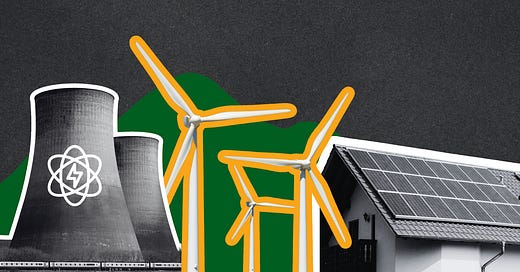Asia’s Energy Dilemma: Lead the Transition or Fall Behind?
Emerging Asia is responsible for around 50% of the world's greenhouse gas emissions, whereas Energy, Manufacturing, and Agriculture contribute nearly 90% to total emissions.
Asia stands at a crossroads in its energy journey. The region is blessed with immense natural resources and is witnessing a remarkable surge in renewable energy adoption, yet its deep-rooted dependence on fossil fuels and exposure to geopolitical risks cast a long shadow over its future. If Asia can navigate these challenges, it has the potential to lead the global energy transition—but doing so requires bold action and coordinated efforts.

Take China and India, for example. These two nations collectively hold about a quarter of the world’s coal reserves, a cornerstone of their industrial growth and energy security. But this reliance on coal comes at a steep price, environmentally and economically. Meanwhile, oil and gas-rich countries like Saudi Arabia and Iran anchor Asia’s energy imports, with Southeast Asia depending on the Middle East for 60% of its oil. This heavy reliance on fossil fuels underscores a stark reality: the region's energy security is fragile, tied to volatile global markets and geopolitical hotspots.
Despite this, hope remained. Renewables are no longer just a supplementary energy source—they’re becoming a dominant force. In 2023, China installed a staggering 350 gigawatts (GW) of renewable energy, accounting for more than half of global additions. By early 2024, the country had reached 1,130 GW of wind and solar capacity, making its 2030 target of 1,200 GW seem almost conservative. India, too, is stepping up, aiming to add 500 GW of non-fossil fuel energy by the end of the decade, with significant investments in solar and wind power. Even Southeast Asia, long dependent on fossil fuels, is making strides, with total commitment targeting 225 GW of new renewable capacity by 2030.
However, progress on renewables is being outpaced by Asia’s stubborn reliance on fossil fuels. In 2023, coal, oil, and gas still accounted for 80% of Southeast Asia’s energy demand. Coal alone generated half of the region’s electricity and contributed 80% of its power sector emissions. The impact on people’s lives is stark: 85% of Southeast Asia’s population was exposed to unsafe air quality last year, resulting in 540,000 premature deaths. These aren’t just numbers; they’re a glaring reminder that the human and environmental costs of fossil fuels are unsustainable.
At the same time, climate risks are mounting. The devastating 2024 heatwave, which disrupted infrastructure and productivity across the region, is just a preview of what’s to come if the status quo persists. And it’s not just the environment that’s at stake—Asia’s energy security is on shaky ground. Fossil fuel subsidies in Southeast Asia soared to a record $105 billion in 2022, driven by global price shocks. Meanwhile, the region’s dependence on Middle Eastern oil leaves it vulnerable to geopolitical conflicts, from Russia’s war in Ukraine to instability in the Persian Gulf.
Solutions
High-capacity energy sources could be the solution for Asia, utilizing recent advancements in nuclear power—an energy source that is 2 million times more energy-dense than oil and gas. With new reactors and fuel sources ensuring safety for both the environment and society, nuclear energy is gaining traction. The Vietnamese government very recently approved the return of nuclear power to strengthen national energy security and achieve its net-zero emissions target by 2050.
Asia is uniquely positioned to leverage its geographical advantages and drive its energy transition with smart, innovative solutions. In Southeast Asia alone, the renewable energy market installed 124,61 GW of capacity in 2025, with projections to reach 178,06 GW by 2030, growing at a compound annual growth rate (CAGR) of 7.4%.
One example of innovation driving this transformation is GetSolar, a company offering affordable and rapid solar energy solutions tailored to Southeast Asia. GetSolar eliminates barriers to solar adoption by financing, installing, and maintaining rooftop solar systems at zero upfront cost to customers. Their model delivers instant savings, charging a flat monthly fee lower than the customer’s electricity savings, enabling households and businesses to save up to 70% on electricity bills.
Asia has a choice: continue down its current path and face growing environmental, economic, and security risks, or embrace a future powered by clean, resilient energy systems. The region has shown it can lead in renewable energy; now it needs to back that progress with bold policies and investment. If it does, Asia won’t just secure its own energy future—it could set the standard for the rest of the world.




